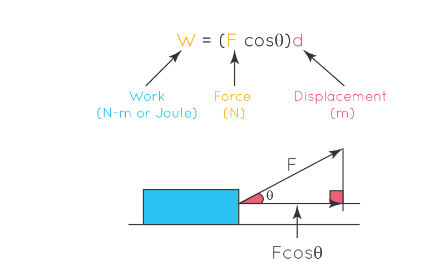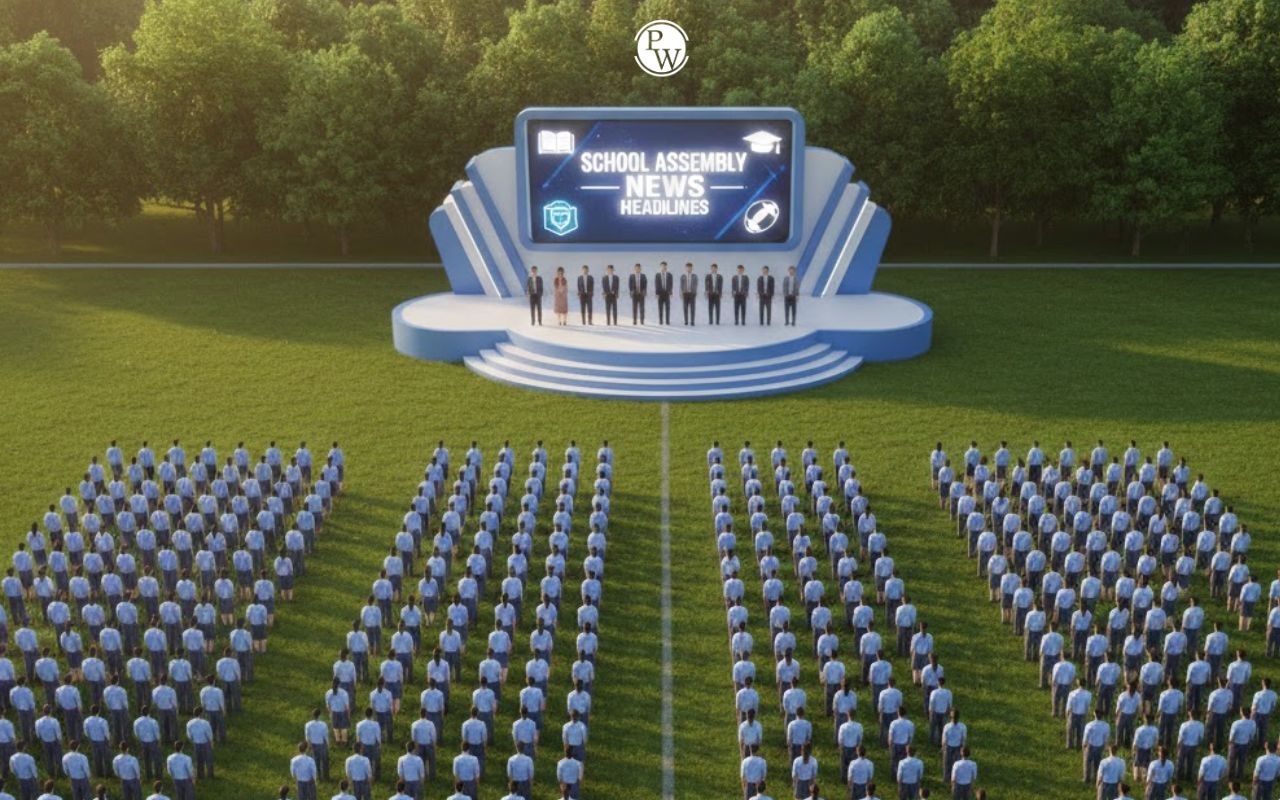
Definition And Formula Of Force Displacement Graph
Workdone in Force Displacement Graph is a fundamental concept in physics that describes the energy transferred when a force acts on an object and causes it to move a certain distance. To calculate the work done by a constant force, you can use the following formula: Where:
- W is the work done (measured in joules, J).
- F is the magnitude of the force (measured in newtons, N).
- d is the displacement of the object in the direction of the force (measured in meters, m).
- theta is the angle between the force vector and the direction of displacement (measured in radians).
Here are the key details and steps for calculating the work done by a constant force:
Where:
- W is the work done (measured in joules, J).
- F is the magnitude of the force (measured in newtons, N).
- d is the displacement of the object in the direction of the force (measured in meters, m).
- theta is the angle between the force vector and the direction of displacement (measured in radians).
Here are the key details and steps for calculating the work done by a constant force:
- Identify the Force: Determine the magnitude and direction of the constant force acting on the object. This force can be applied in various ways, such as pushing, pulling, or lifting.
- Determine the Displacement: Find the distance and direction over which the object is displaced by the force. The displacement should be measured in the direction of the force.
Also Check - Work Done by a Variable Force Formula
- Calculate the Angle \theta: If the force and displacement are not in the same direction, you need to calculate the angle \theta\) between them. This angle is measured in radians and can be found using trigonometry.
- Plug Values into the Formula: Use the formula W = F *dcos(θ) and substitute the values you have gathered for F\), d\), and θ
- Calculate the Work: Perform the calculations to find the work done by the constant force. Ensure that you use consistent units for force (N), displacement (m), and angle \theta.
- Consider Sign and Interpretation: The sign of the work done can provide information about the nature of the work. Positive work is done when the force and displacement are in the same direction (e.g., lifting an object), while negative work is done when they are in opposite directions (e.g., lowering an object against gravity).
- Units and Final Answer: Make sure your final answer has the appropriate units (joules, J) and includes the sign to indicate whether the work is done on the object (positive) or by the object (negative).
Also Check - Work Done in Raising a Box Formula
In summary, the work done by a constant force depends on the magnitude of the force, the distance over which the force is applied, and the angle between the force and the direction of displacement. Calculating work is essential in understanding the energy transfer associated with various physical processes and is a fundamental concept in mechanics and physics.Some Examples Of Force Displacement Graph
Certainly! Here are some examples of calculating the work done by a constant force in different scenarios:- Lifting a Weight:
Also Check - Unit, Dimension & Vector Formula
Work Done Calculation by Force Displacement Graph
 To calculate the work done using a force-displacement graph, you need to find the area under the graph. The work done is equal to the area under the curve of the force-displacement graph. The formula for calculating work in this context is:
Work (W)= Area under the Force-Displacement Graph
Here's how you can do it:
To calculate the work done using a force-displacement graph, you need to find the area under the graph. The work done is equal to the area under the curve of the force-displacement graph. The formula for calculating work in this context is:
Work (W)= Area under the Force-Displacement Graph
Here's how you can do it:
- Plot the force-displacement graph: Make sure you have a clear graph of force (F) on the y-axis and displacement (d) on the x-axis. The graph should represent the relationship between these two variables.
- Divide the graph into shapes: Depending on the complexity of the graph, you may need to divide it into different shapes, such as rectangles, triangles, or trapezoids. These shapes should approximate the curve of the graph.
- Calculate the area of each shape: For each shape, calculate its area. The area of a rectangle is given by Area} =Length*Width,
-

- Sum up the areas: Add up the areas of all the shapes to find the total area under the graph. This total area represents the work done by the force in displacing the object.
- Units: Make sure your units are consistent. If your force is in Newtons (N) and displacement is in meters (m), the work done will be in joules (J).
- Calculate the area of the triangle:
Work Done Calculation by Force Displacement Graph FAQs
What does the area under the force-displacement graph represent?
The area under the force-displacement graph represents the work done by the force in displacing an object. It quantifies the energy transferred to or from the object due to the force.
How do I interpret a negative area under the graph?
A negative area under the graph indicates that work is done against the force or that the object is doing work on the force (e.g., when the force opposes the displacement). It represents a decrease in energy.
Can I use any shape to approximate the graph for calculating work?
Yes, you can use various shapes like rectangles, triangles, or trapezoids to approximate the graph. The choice of shape depends on how accurately you want to estimate the work done.
Is this method applicable to all types of force-displacement graphs?
This method is applicable to graphs where the relationship between force and displacement is continuous and can be approximated by geometric shapes. For more complex or irregular graphs, numerical integration techniques may be required for accurate calculations.
🔥 Trending Blogs
Talk to a counsellorHave doubts? Our support team will be happy to assist you!

Check out these Related Articles
Free Learning Resources
PW Books
Notes (Class 10-12)
PW Study Materials
Notes (Class 6-9)
Ncert Solutions
Govt Exams
Class 6th to 12th Online Courses
Govt Job Exams Courses
UPSC Coaching
Defence Exam Coaching
Gate Exam Coaching
Other Exams
Know about Physics Wallah
Physics Wallah is an Indian edtech platform that provides accessible & comprehensive learning experiences to students from Class 6th to postgraduate level. We also provide extensive NCERT solutions, sample paper, NEET, JEE Mains, BITSAT previous year papers & more such resources to students. Physics Wallah also caters to over 3.5 million registered students and over 78 lakh+ Youtube subscribers with 4.8 rating on its app.
We Stand Out because
We provide students with intensive courses with India’s qualified & experienced faculties & mentors. PW strives to make the learning experience comprehensive and accessible for students of all sections of society. We believe in empowering every single student who couldn't dream of a good career in engineering and medical field earlier.
Our Key Focus Areas
Physics Wallah's main focus is to make the learning experience as economical as possible for all students. With our affordable courses like Lakshya, Udaan and Arjuna and many others, we have been able to provide a platform for lakhs of aspirants. From providing Chemistry, Maths, Physics formula to giving e-books of eminent authors like RD Sharma, RS Aggarwal and Lakhmir Singh, PW focuses on every single student's need for preparation.
What Makes Us Different
Physics Wallah strives to develop a comprehensive pedagogical structure for students, where they get a state-of-the-art learning experience with study material and resources. Apart from catering students preparing for JEE Mains and NEET, PW also provides study material for each state board like Uttar Pradesh, Bihar, and others
Copyright © 2025 Physicswallah Limited All rights reserved.
Get App









